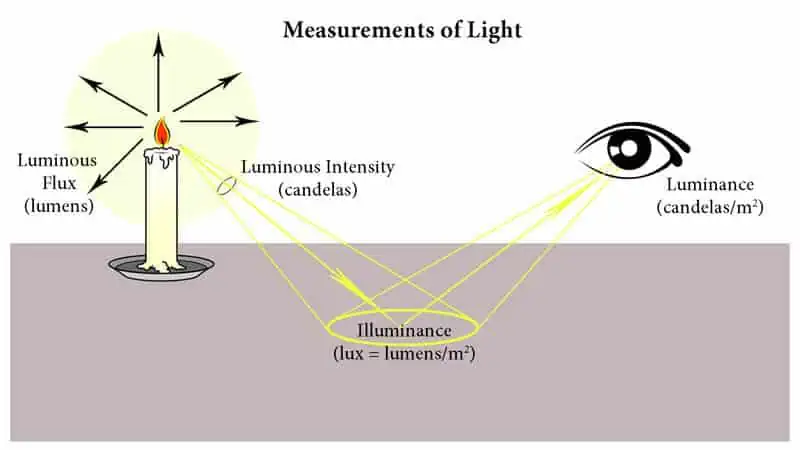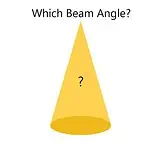People measure lights using different units like Candela, Lux, and Lumens. Have you ever thought about evaluating lights applying any of these units?
You may get into trouble doing so because the light measuring units Candela, Lux, and Lumens often interchange. So I decided to save you from this confusion by bringing up their differences.
The units Candela, Lux, and Lumens measure the intensity of light. Lux refers to the quantity of light that reaches an object. And Lumens and Candela are the metrics used to check the amount of light emission.
Yet, these three terms are often misused while determining the light’s brightness. That is why you should know what they mean and what factors separate the units from each other.
Let’s dive into the discussion to know further.
What is Candela?
Candela states the Luminous Intensity of a light source. This term originated from the Latin word ‘Candela’ and is related to the intensity of a candle. For instance, one Candela is approximately equal to the brightness of a candle.
In lay terms, Candela measures the intensity of light in a particular direction or angle. Not clear? Think of laser light; it directs the light in a specific direction. That is why the Candela rate is the highest in laser or spotlights.

What is Lux?
Lux (lx) is the measuring unit for illumination. It indicates the quantity of light reflected per square meter.
So, for a Lux rating, you need to consider the room’s area or the light source’s distance from a particular point. In this case, the value of Lux is inversely proportional to the square to the length. That is, as the distance increases, the value of Lux decreases. Thus, the light that seems bright in a small room will not look as bright when put in a large room.
In book words, Lux is expressed as – 1 lx is equal to 1lm/m^2. That is, the value of Lux depends on Lumens (lm). So, let’s jump into Lumens to learn Lux better-
What is Lumen?
The value of Luminous Flux is measured in Lumen (lm). It is the most used term to express the intensity of lights.
Lumens state the total capacity of a light source. That is, the overall brightness that light produces is Lumens. Unlike Candela (cd), Lumens doesn’t calculate the illumination from a particular direction. Rather it indicates a raw Lumens.
This raw Lumen measures the brightness of the light source from all sides. As a result, regardless of the light output angle, the value of Lumen remains constant.
Furthermore, Lumens value varies with the light’s type, color, and power source.

Candela vs Lux vs Lumens – What Are The Differences?
The primary differences between Candela, Lux, and Lumens are as follows in the table below-
| Specifications | Candela | Lumens | Lux |
| Definition | Candela is the brightness level of a light source at a particular angle and direction. | Lumen indicates the total output of light in all directions. | The amount of illumination that strikes per square meter area is Lux. |
| Measuring Unit Of | Luminous Intensity | Luminous Flux | Illuminance |
| Symbol (SI) | cd | lm | lx |
Candela is the measuring unit of Luminous Intensity. Meanwhile, Lumen and Lux are the units for Luminous Flux and Illuminance.
In simple words, Candela indicates how bright a light source is; Lux measures how bright an object seems in the light source. And Lumen shows the total output the light source provides.
The distance change affects the value of Lumen and Lux, but Candela remains constant. That is because Candela’s value depends on angles instead of distance.
Candela vs Lux vs Lumens – How They Relate?

The most common relation among these three terms is that they all are the measuring unit of light. To clarify the concept, let’s get to the root of these terms-
Lumens is a derivative form of Candela. Both terms measure luminous; that is, they state the brightness of a light source. The difference is that lumens take account of light beams from all directions. In contrast, Candela considers that for a particular direction.
Again, the unit Lux is the measurement of Lumens per square meter. It is a derivation form of Lumens. In mathematical terms, 1 lx = 1lm/m^2. This equation provides a more accurate representation of light’s brightness than Lumens.
And a more interesting fact is that Lux is the metric version of foot candles (an old term referring to Candela).
| Derived from Derived from Lux ———————→ Lumens ——————–→ Candela 1 lx = 1 lm/m2 = 1 cd·sr/m2 |
Thus, Candela, Lux, and Lumens are interrelated with each other. Yet, they state three separate identities, but they are connected and convertible.
A full sphere has a solid angle of 4π steradians, so a light source that uniformly radiates one candela in all directions has a total luminous flux of
1 cd × 4πsr = 4π cd · sr ≈12.57 lm.
Factors Affecting The Value Of Candela Vs. Lux Vs. Lumens
The values of Candela, Lux, and Lumens fluctuate for the following factors:
Distance
The distance between an object and the light source affects the values of Lux and Lumens. That is because the square of the distance is inversely proportional to these units.
Increasing the length by two times, the value of lx will reduce to 1/4th of the initial values. But distance doesn’t affect the value of Candela, as it concerts with angles rather than distance.
Angle Of Radiance
The angle produced by the light source affects the illumination. The smaller the angle is, the more the value of Candela and Lux; the brighter the light is.
Moreover, illumination area increases for larger angles of radiance, keeping the value of lm constant.
Luminous Efficiency
Luminous efficiency measures the ability of a light source to produce bright lights. It depends on the power source’s Wattage and Lumens rating. The luminous efficiency increases as the Watt value decreases.
That is, the greater the luminous efficiency is, the brighter the light is.
Which is The Standard Light Measuring Unit For LED Strip?
The standard light measuring unit for LED Stipe is Lumens. But, we often make mistakes measuring the brightness of LED stripes with Wattage. That is entirely an unfair practice as different light has different luminous efficiency.
So, the correct way to judge the performance of a LED stripe is with Lumen per foot/meter.
However, the value of Lumens varies with the color of the LED stripe. For instance, white LED stripes have a higher Lumen value than colorful LED stripes.

How Do Lumens & Wattage Relate?
Lumens indicate the total output a light source produces, whereas Wattage is the energy used to run the light. Still, to judge the light’s performance, you must consider the light’s efficiency by knowing the lumen and Wattage value.
In this case, energy-saving bulbs are the most efficient. Because they produce a higher lumen rate utilizing the least energy (Wattage). That is why they are called energy-saving bulbs.
The efficiency of light is calculated as Lumen Per Watt. That is
Light Efficiency, E = lm/W
So, the light’s performance increases when the efficiency improves. At the same time, high-efficient lights minimize your electric bill.

FAQs
1 lux indicates the amount of illumination created per square meter for one lumen light distribution, 1 Lx = 1lm/m^2.
1 cd = 1 lm/sr is the formula for Candela. Dividing the lumen value with steradian, you can get the value for Candela.
The total Luminous Flux (lx) of LED divided by the energy required to run the light is called LED luminous efficiency. Its unit is lm/W.
The ideal level of Lux is different in different places. For example- 150 lx is perfect for a home, whereas 750 lx is excellent for malls or retail stores.

Conclusion
I hope, if you read this article, now you know the differences between Candela, Lux, and lumens well. So, no more confusion in judging the brightness of the light from today.
We are a factory specializing in producing high-quality customized LED strips and LED neon lights.
Please contact us if you need to purchase LED lights.





